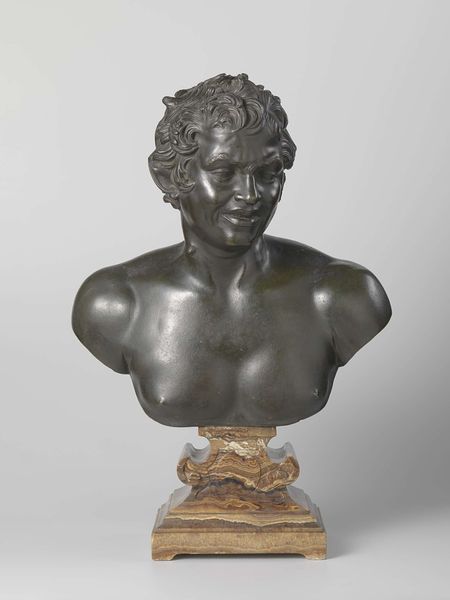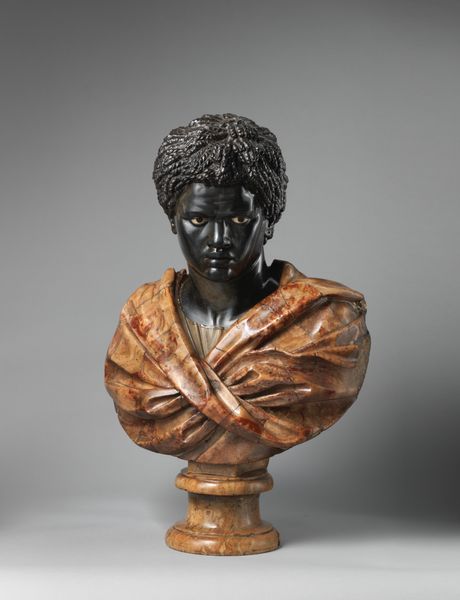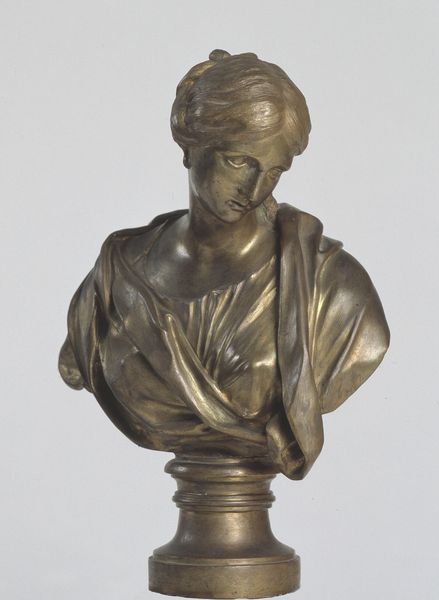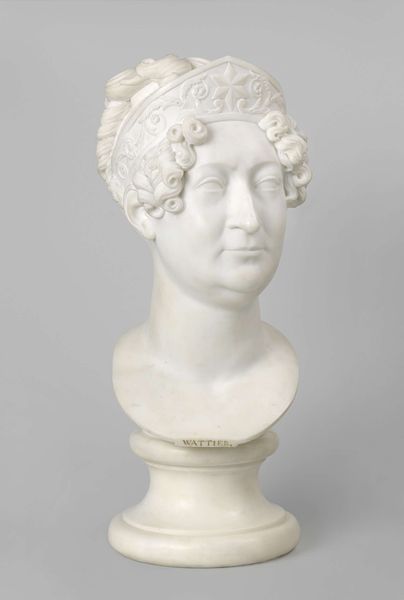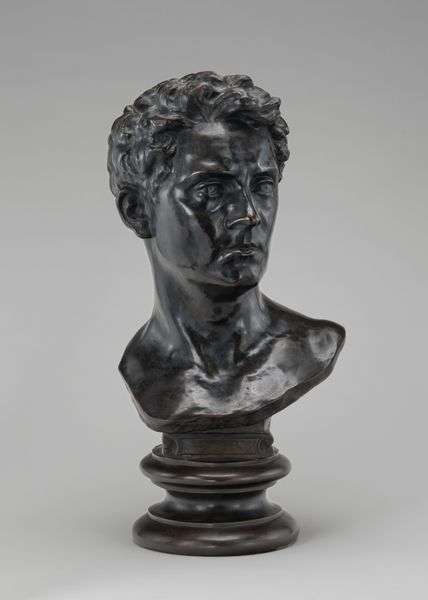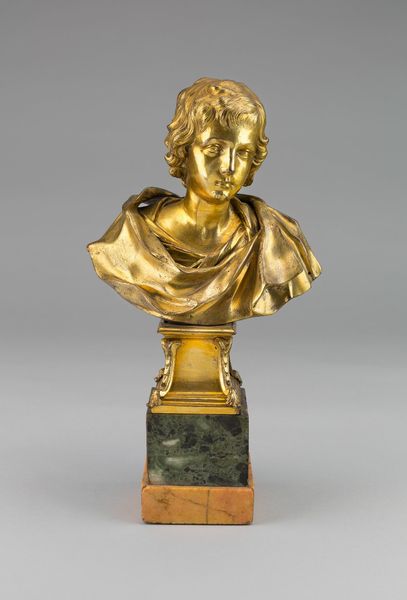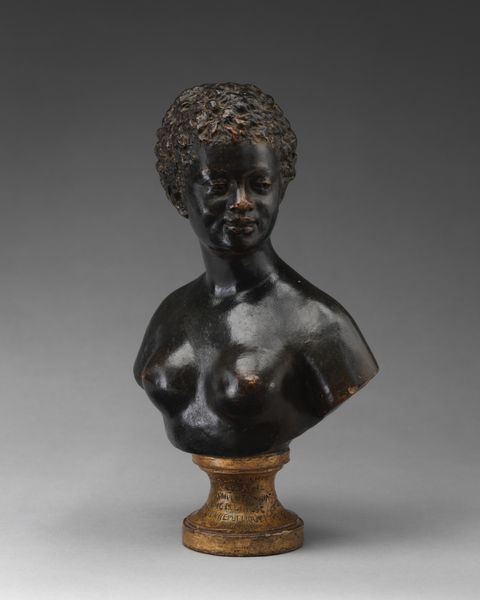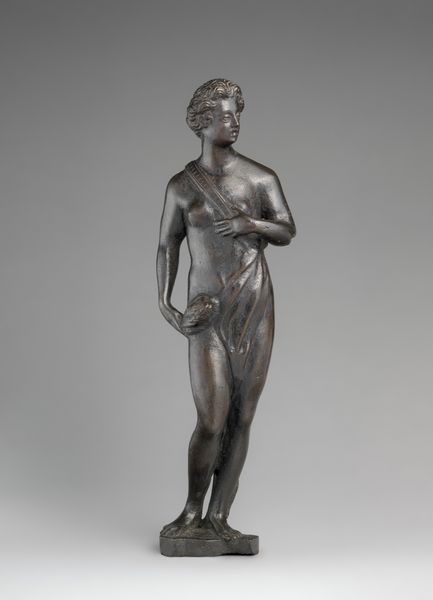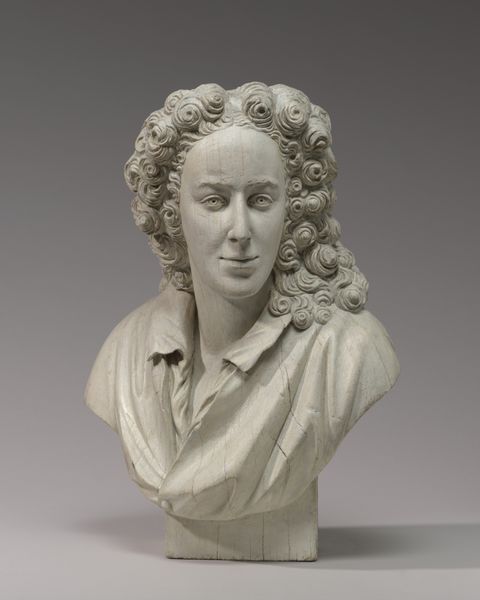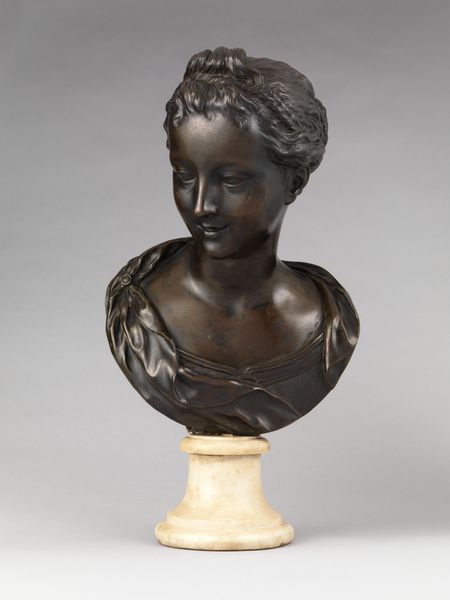
bronze, sculpture
#
portrait
#
baroque
#
bronze
#
classicism
#
sculpture
#
decorative-art
Dimensions: Overall, with socle, weight confirmed: 17 3/8 in., 58 lb. (44.1 cm, 26.3 kg) Overall, without socle, weight confirmed: 40.5 lb. (18.4 kg)
Copyright: Public Domain
Editor: This is "Erato," a bronze sculpture dating from around 1675 to 1705, made by François Girardon. It’s currently housed in the Metropolitan Museum of Art. I am really drawn to the subject's peaceful gaze. What stands out to you when you look at this piece? Curator: What strikes me is the conscious revival of classical ideals, yet within the context of Louis XIV's France. Girardon wasn't merely replicating; he was strategically constructing an image of power and legitimacy. Do you see how Erato, the muse of lyric poetry, is rendered with both sensuality and a kind of restrained intellectualism? Consider who this sculpture would have been for and what it communicated to them. Editor: I see that! There's definitely a tension there, a balance of power and beauty. Were female figures often used in this way? Curator: Absolutely. Female allegories and mythological figures were frequently deployed to embody virtues and aspirations of the monarchy. The “feminine” was often symbolic, and separated from actual lived experience, used to reflect and uphold societal power structures. How does knowing that affect your reading of Erato’s peaceful gaze now? Editor: It adds a layer of complexity. It’s not just a portrait, it's a statement about authority masked as beauty. Curator: Exactly! And it’s vital we recognize those underlying power dynamics at play. Editor: This makes me realize how important it is to look at art within the context of the society it came from. Thank you! Curator: It's a pleasure. Questioning and contextualizing is the core of art historical interpretation!
Comments
No comments
Be the first to comment and join the conversation on the ultimate creative platform.

